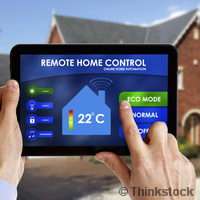Energy industry ready to get smart

We're entering the age of the Internet of Things (IoT): a brave new world populated by 'smart' objects' capable of interacting and communicating among them-selves and with their environment. This emerging IoT ecosystem will enhance our ability to monitor, engage with and ultimately improve our transport, health and energy systems.
Edoardo Calia of the Instituto Superiore Mario Boella (ISMB), an institute for ICT research, joined participants at this week's European Biomass Association (AEBIOM) conference to discuss how IoT will 'smarten up' the energy industry.
'ICT and energy are normally considered as two entities that are very separate from each other. However ICT can be extremely helpful for a number of features: monitoring, what we call 'actuation' - remote control and sending commands - and then involving the interested communities,' he said.
In the energy sector, one of the big problems in the networks is the management of peak situations. In an era of IoT, we could address this issue. 'In your home, all of your appliances could talk to each other; talk to the network and generate information about how much they are consuming. Once you collect all of this information, some decisions on the overall system could be taken. Smart appliances, for example, could make decisions on when to start their cycle based on when the network is freer and more energy is available'.
There are obstacles to achieving a truly smart energy industry however. According to Mr Calia, we need standardisation and new business models. 'What is not yet well established is the process portion of the Internet of Things. If you want to base some services on the Internet of Things, you need business models, you need some processes in place that today do not exist. They must be introduced or changed and that's a little slower'.
Mr Calia continues, 'The problem is on two sides: firstly the standardisation - there are no widely agreed upon set of protocols for the exchange of information related to energy. On the other side, policies are needed which are normally established by public administration and public bodies.'
Although Mr Calia believes that we don't need more research into developing technology, we do need research into implementation. 'From the technical point of view, we're already there ... The research should not be focused on the creation of new devices and new technologies but on how to use them and how to interact with the devices. This is what we call interaction design - from human to smart system interface'.
Mr Calia and his team at ISMB are currently involved in numerous smart energy projects. 'We have a project with the National Agency for Energy (ENEA) in Italy. They have a lot of data related to generation plants and the highest energy consumption locations but this is just a huge set of excess forms that nobody understands. We are starting now to transform this information, putting the data into a database and setting up an engine to process it and give some easy to understand pictures'.
ISMB is also leading the EU-funded ALMANAC ('Reliable Smart Secure Internet Of Things For Smart Cities') project. 'The idea is to embed smart devices in the energy networks including water networks and heating networks so that the latter become smart enough to generate and exchange information with users. In this case, the research could also aim at having an impact on the behaviour of users. We learn which behaviours are consuming too much energy and which behaviours are compliant with general efficiency principle.'
More information: cordis.europa.eu/projects/rcn/109709_en.html
Provided by CORDIS



















